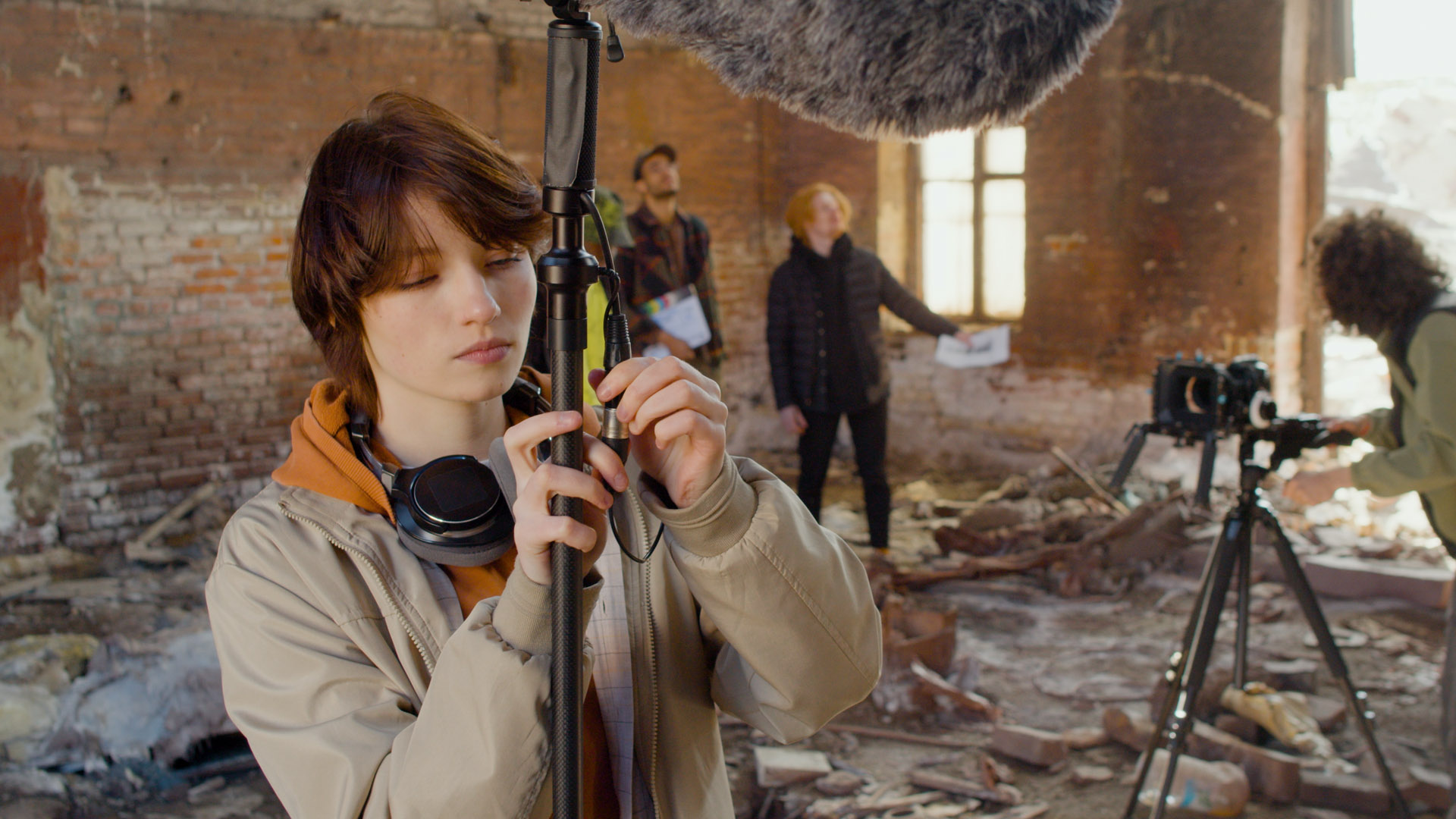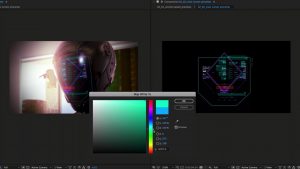Lavalier and shotgun microphones are both common tools among content creators, but how do you know when to use which one?
Okay, so you’ve spent several weeks looking for your next camera and lens to start your content creation journey. However, it doesn’t stop there. You’re then going to have to acquire audio equipment. Typically, content creators gravitate toward two types of microphones: the lavalier microphone or the shotgun microphone.
Both have distinct features and applications that make them suitable for different situations. In this video, we will explore the pros and cons of shotgun microphones and lavalier microphones to help you decide when choosing the right microphone for your filmmaking needs.
Shotgun Microphones: Pros and Cons
A shotgun microphone, or a boom microphone, is a highly directional microphone that captures sound from the front while reducing background noise. It is often mounted on a boom pole and operated by a dedicated sound operator or boom operator.
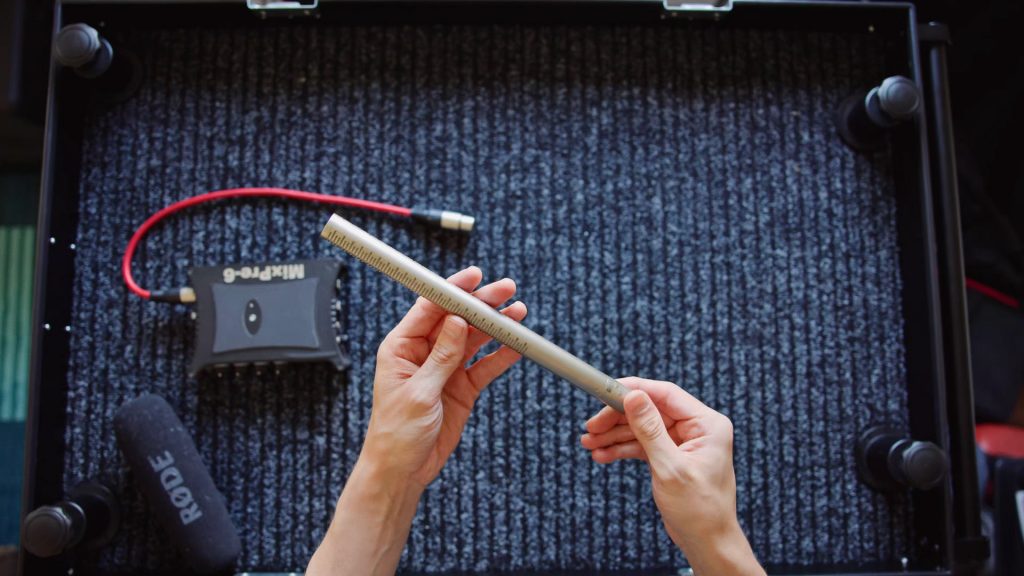
Advantages of Shotgun Microphones:
- Highly Directional: one of the key advantages of shotgun microphones is their ability to capture sound from the direction in which they’re pointed. This directional pickup pattern helps to isolate the desired audio source and minimize unwanted background noise. If you have an actor walking through a busy street with a shotgun mic pointed toward the actor, the primary audio captured will only be of the actor’s dialogue and movement.
- Suitable for Distance Recording: shotgun microphones are designed to capture audio from a slight distance, making them ideal for situations when the sound source is not in close proximity to the camera. They are commonly used in film productions, where the microphone can be positioned out of frame while capturing clear audio, unlike an omnidirectional news reporter microphone that needs to be close to the speaker.

- Multiple Speakers: as a shotgun microphone is usually operated by a dedicated person, just one microphone can be used to record a narrative scene, as the sound operator can move the mic position between the speakers.
- Go Go Gadget Microphone: Numerous shotgun microphone accessories on the market can help you achieve fantastic audio in the harshest conditions.
Limitations of Shotgun Microphones:
- Limited Range: while shotgun microphones excel at capturing sound from a distance, their effectiveness diminishes as the distance between the microphone and the sound source increases. Therefore, they may not be suitable for recording extremely distant sounds.
- Additional Equipment and Crew: shotgun microphones often require additional equipment such as boom poles, shock mounts, and windshields. It also necessitates a dedicated sound operator or boom operator to handle the microphone, adding to the production crew size and cost.
- Shotgun mics often require an external audio recorder or preamp to ensure high-quality sound. This means additional equipment and setup time, which may complicate the filmmaking process. (I love the MixPre-6, but it burns through AA batteries.)
- Likewise, when we pass the idea of the on-camera mics like the Rode VideoMic, we’re going to be using XLRs which just aren’t suitable for mirrorless cameras, so you will need a field device if you’re not recording on something like the C300 Mk III.
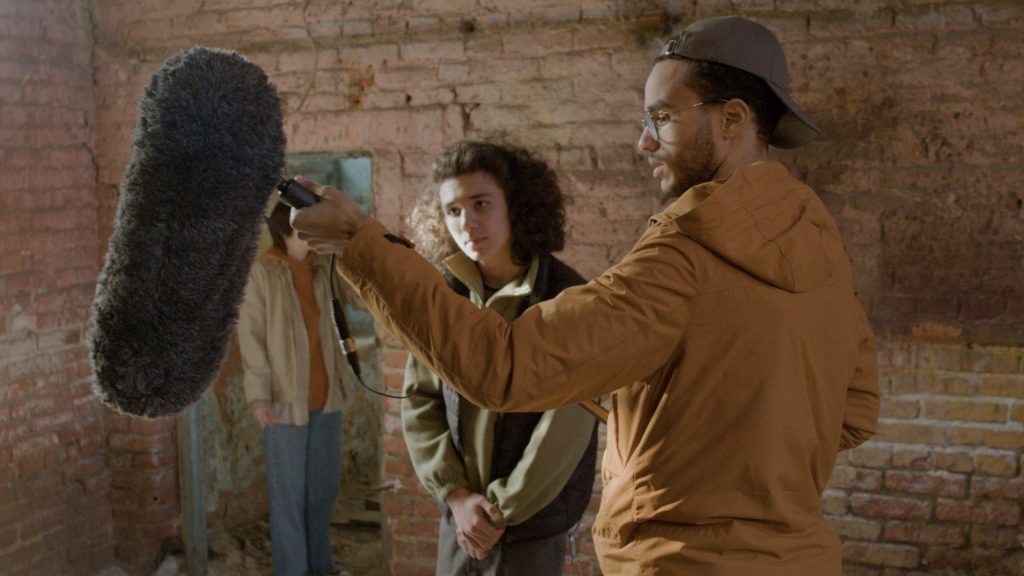
Additionally, another detriment to shotgun mics is that if the speaker is in front of a noisy source, that too is going to be captured.
Lavalier Microphones: Pros and Cons
A lavalier or lapel microphone is a small, discreet microphone that can be easily attached to clothing or objects. It is commonly used in interviews, presentations, and situations when the subject needs to move around freely while maintaining consistent audio quality.
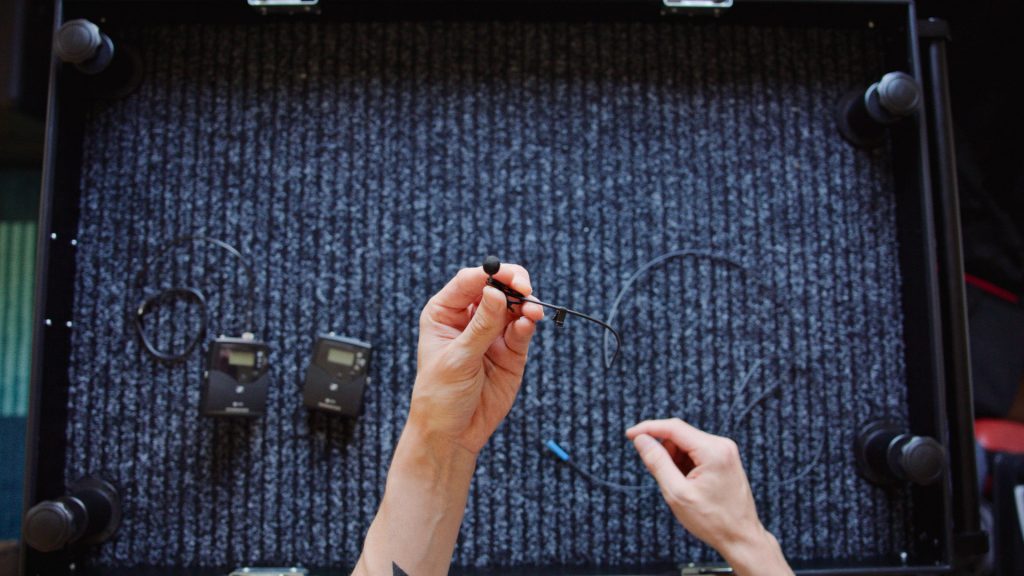
Advantages of Lavalier Microphones:
- Compact and Lightweight: lavalier microphones are compact and lightweight, making them easy to conceal and attach to clothing or props. They provide a convenient, hands-free solution for capturing individual voices without obstructing the subject’s movements.
- Minimized Background Noise: lavalier microphones are designed to capture audio from proximity to the sound source, resulting in a clear and focused sound. They excel at minimizing background noise and capturing the speaker’s voice accurately.
- Perfect for self-shooters: as noted in our video introduction, using the lavalier mic is perfect when you’re self-shooting as you’re able to attach it yourself, turn on the receiver, and let technology do the rest.
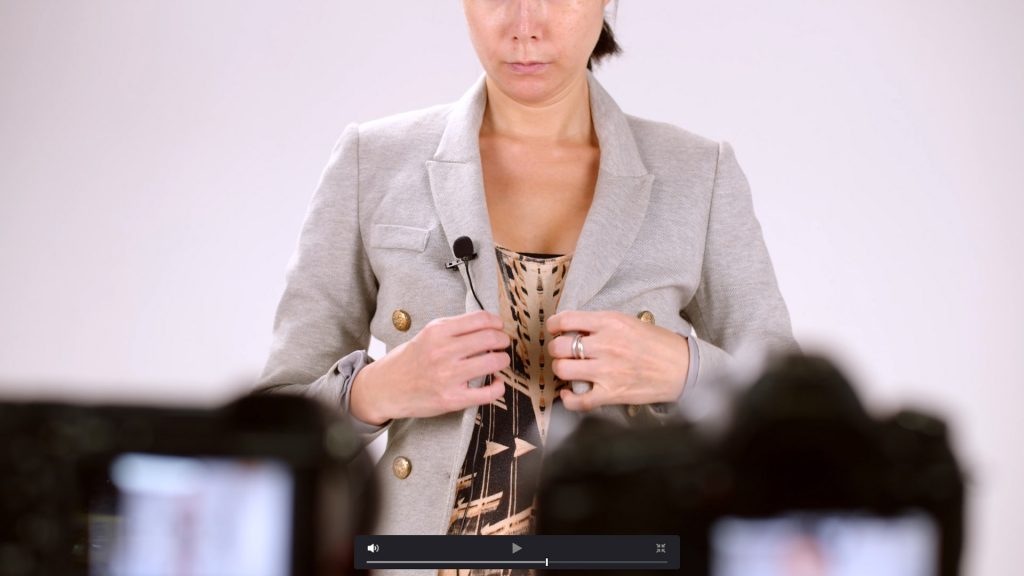
Limitations of Lavalier Microphones:
- Shirt Noise: when using lavalier microphones, the microphone’s proximity to clothing can sometimes result in unwanted noise caused by rubbing against fabric or cables. This can be mitigated through careful placement and accessories such as microphone clips or tape.
- Visibility: while lavalier microphones are discreet, they may still be visible in the frame, especially if the camera is positioned to reveal the microphone. This can be a consideration when aesthetic factors come into play.
- Connectivity Issues: wireless lavalier microphones rely on transmitters and receivers for communication, occasionally resulting in connectivity issues or interference. It is important to ensure a reliable wireless system for optimal performance.
Factors to Consider When Choosing
When deciding between a shotgun microphone and a lavalier microphone, it is crucial to consider the specific needs of your project and the shooting environment. Here are some factors to take into account:
- Shooting Environment: determine whether you will be filming indoors or outdoors in controlled or uncontrolled environments. This will help you assess the background noise level and the need for directional sound capture.
- Shot Composition: consider the shots you will be capturing, such as wide shots, close-ups, or moving shots. Each shot composition may require different microphone placement and pickup patterns for optimal audio quality.
- Budget: consider the cost considerations for the microphone and any additional equipment, such as boom poles, shock mounts, or wireless systems. It is essential to balance your budget and the desired audio quality.
- Crew Size: evaluate the availability of dedicated sound operators or boom operators. Shotgun microphones often require an additional crew member to handle the boom pole, while lavalier microphones provide more flexibility for solo operations.
Considering these factors will help you decide between a shotgun microphone and a lavalier microphone for your specific project.
Conclusion
In summary, both shotgun and lavalier microphones have strengths and weaknesses. Shotgun microphones excel at capturing sound from a distance and are ideal for controlled environments, while lavalier microphones provide convenience and mobility for subjects who need to move freely. In a perfect situation, we’d want to combine both types of microphones to cover a range of shooting scenarios may also be beneficial.
Looking for filmmaking tips and tricks? Check out our YouTube channel for tutorials like this . . .
